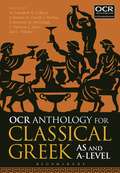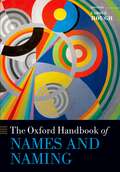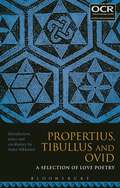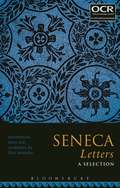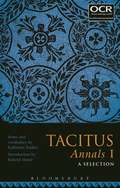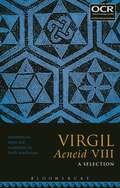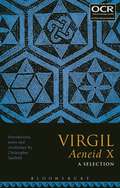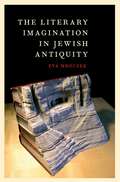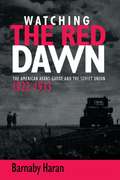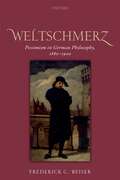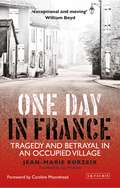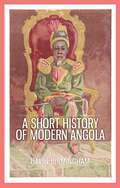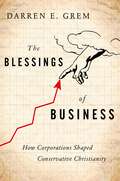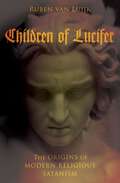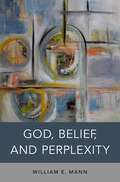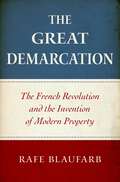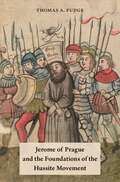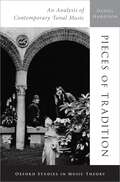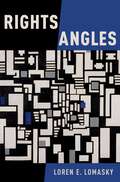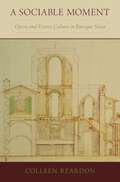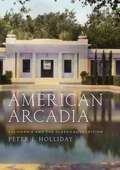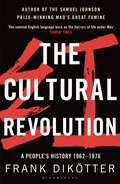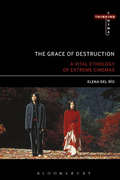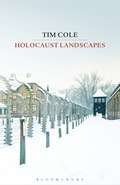- Table View
- List View
OCR Anthology for Classical Greek AS and A Level
by Malcolm Campbell Rob Colborn Frederica Daniele Benedict Gravell Sarah Harden Steven Kennedy Matthew McCullagh Charlie Paterson John Taylor Claire WebsterThe OCR-endorsed publication from Bloomsbury for the Greek AS and A-Level set text prescriptions giving full Greek text, commentary and vocabulary and a detailed introduction for each text that also covers the prescription to be read in English for A Level. The texts covered are:ASThucydides, Histories, Book IV: 11–14, 21–23, 26–28 Plato, Apology, 18a7 to 24b2Homer, Odyssey X: 144–399Sophocles, Antigone, lines 1–99, 497–525, 531–581, 891–928 A-levelThucydides, Histories, Book IV: 29–40Plato, Apology, 35e–endXenophon, Memorabilia, Book 1.II.12 to 1.II.38Homer, Odyssey IX: 231–460Sophocles, Antigone, lines 162–222, 248–331, 441–496, 998–1032Aristophanes, Acharnians, 1–203, 366–392
The Oxford Handbook of Names and Naming (Oxford Handbooks)
In this handbook, scholars from around the world offer an up-to-date account of the state of the art in different areas of onomastics, in a format that is both useful to specialists in related fields and accessible to the general reader. Since Ancient Greece, names have been regarded as central to the study of language, and this has continued to be a major theme of both philosophical and linguistic enquiry throughout the history of Western thought. The investigation of name origins is more recent, as is the study of names in literature. Relatively new is the study of names in society, which draws on techniques from sociolinguistics and has gradually been gathering momentum over the last few decades. The structure of this volume reflects the emergence of the main branches of name studies, in roughly chronological order. The first Part focuses on name theory and outlines key issues about the role of names in language, focusing on grammar, meaning, and discourse. Parts II and III deal with the study of place-names and personal names respectively, while Part IV outlines contrasting approaches to the study of names in literature, with case studies from different languages and time periods. Part V explores the field of socio-onomastics, with chapters relating to the names of people, places, and commercial products. Part VI then examines the interdisciplinary nature of name studies, before the concluding Part presents a selection of animate and inanimate referents ranging from aircraft to animals, and explains the naming strategies adopted for them.
Propertius, Tibullus and Ovid: A Selection of Love Poetry
by Anita NikkanenThis is the OCR-endorsed publication from Bloomsbury for the Latin AS and A-Level (Group 3) prescription of Ovid's Amores 1.1 and 2.5, Propertius 1.1 and Tibullus 1.1 with the A-Level (Group 4) prescription of Ovid's Amores 2.7 and 2.8, Propertius 1.3 and 2.14 and Tibullus 1.3, giving full Latin text, commentary and vocabulary, with a detailed introduction that also covers the prescribed text to be read in English for A Level.Propertius, Tibullus and Ovid are our three main writers of Latin love elegy. The selected poems depict the bitter-sweet love affairs of the poet-lovers and their mistresses, from the heartbreak of rejection to the elation at love reciprocated. While Propertius's and Ovid's setting is the city and their poems show us such details of urbane Roman life as drinking parties and elaborate hair-dressing, Tibullus introduces the idyll of the countryside to the genre. Their sophisticated poems combine intense emotion with wit and irony, and celebrate the life of love and their mistresses, Propertius's Cynthia, Tibullus's Delia and Nemesis, and Ovid's Corinna.
Seneca Letters: A Selection
by Eliot MaunderThis is the OCR-endorsed publication from Bloomsbury for the Latin A-Level (Group 2) prescription of Seneca's Letters, giving full Latin text, commentary and vocabulary for Letters 51, 53 and 57, with a detailed introduction that also covers the prescribed text to be read in English.The most enduringly popular of his works, the Letters are an ideal introduction to both the personal philosophy and the vibrant Latin of Seneca. He writes with wit and modesty to his friend Lucilius about his own, daily struggle to live up to the ideals of Stoicism. Over the course of this selection he covers a great variety of topics including the Stoics' perennial conflict with Fortune, the corrupting influence of a bad environment and the irrational nature of most fear. Composed not long before his own suicide, the Letters also provide an important insight into Seneca's views on death and immortality.
Tacitus Annals I: A Selection
by Katharine Radice Roland MayerThis is the OCR-endorsed publication from Bloomsbury for the Latin AS and A-Level (Group 1) prescription of Annals Book I sections 16–30 and the A-Level (Group 2) prescription of Annals Book I sections 3–7, 11–14 and 46–49, giving full Latin text, commentary and vocabulary, with a detailed introduction that also covers the prescribed text to be read in English for A Level.Annals I starts with the death of Augustus and the beginning of Tiberius' principate. Tacitus chronicles the uneasy and unprecedented transition from one to the other, in the context of a political elite shaken by years of civil war and unsure as to how best to protect their own interests and the stability Augustus had brought to Rome. With damning references to the servile nature of the new regime, Tacitus vividly paints scenes of confused senatorial debates, and Tiberius' own uncertainty over his own position and the best decisions to make. Opportunistic rebellions in the army are described with dramatic brilliance.
Virgil Aeneid VIII: A Selection
by Keith MaclennanThis is the endorsed publication from OCR and Bloomsbury for the Latin AS and A-level (Group 3) prescription of Virgil's Aeneid VIII, giving full Latin text, commentary and vocabulary for lines 86–279 and 558–584, along with a detailed introduction.Book VIII of the Aeneid is remarkable for the diversity of its subject matter. Aeneas travels upriver to the site where Rome will be founded. He meets King Evander, who tells him the dramatic story of Hercules and Cacus and shows him round 'Rome' before it is Rome. Aeneas' mother makes new armour for him and at the end of the book we see him brandishing the shield whose centrepiece is the triumph of Augustus. The OCR selection focuses on Evander and Hercules, and concludes with the fatal moment when Aeneas takes Evander's son Pallas to war. Its vivid narrative, human characters and larger-than-life heroes and villains are compelling reading.
Virgil Aeneid X: A Selection
by Christopher TanfieldThis is the OCR-endorsed publication from Bloomsbury for the Latin A-Level (Group 4) prescription of Virgil's Aeneid X, giving full Latin text, commentary and vocabulary for lines 215–250, 260–307, 362–398 and 426–542. A detailed introduction covers the prescribed text to be read in English for A Level.In Book X, the story moves from a council of the gods, via a depiction of Aeneas's return by sea to his beleaguered Trojan camp, to a bloody field of battle. We see Aeneas for the first time as a heroic warrior, but also afflicted by the searing pain of loss as the young son of his new ally, entrusted to him by his father, is killed. Aeneas is for now cheated of his revenge, a revenge which is the preoccupation of the rest of the poem. He does, however, slay the son of a champion of the opposition and then the champion himself, in scenes which re-emphasise that pain.The heart of the book, where Aeneas and his allies join the fray, constitutes the OCR selection. It is an immensely powerful confrontation between violence and compassion, cruelty and nobility.
The Literary Imagination in Jewish Antiquity
by Eva MroczekWinner of the 2017 Manfred Lautenschlaeger Award for Theological Promise Winner of the 2017 The George A. and Jean S. DeLong Book History Book Prize The discovery of the Dead Sea Scrolls revealed a world of early Jewish writing larger than the Bible, from multiple versions of biblical texts to "revealed" books not found in our canon. Despite this diversity, the way we read Second Temple Jewish literature remains constrained by two anachronistic categories: a theological one, "Bible," and a bibliographic one,"book." The Literary Imagination in Jewish Antiquity suggests ways of thinking about how Jews understood their own literature before these categories had emerged. In many Jewish texts, there is an awareness of a vast tradition of divine writing found in multiple locations that is only partially revealed in available scribal collections. Ancient heroes such as David are imagined not simply as scriptural authors, but as multidimensional characters who come to be known as great writers who are honored as founders of growing textual traditions. Scribes recognize the divine origin of texts such as Enoch literature and other writings revealed to ancient patriarchs, which present themselves not as derivative of the material that we now call biblical, but prior to it. Sacred writing stretches back to the dawn of time, yet new discoveries are always around the corner. Using familiar sources such as the Psalms, Ben Sira, and Jubilees, Eva Mroczek tells an unfamiliar story about sacred writing not bound in a Bible. In listening to the way ancient writers describe their own literature-rife with their own metaphors and narratives about writing-The Literary Imagination in Jewish Antiquity also argues for greater suppleness in our own scholarly imagination, no longer bound by modern canonical and bibliographic assumptions.
Watching the red dawn: The American avant-garde and the Soviet Union
by Barnaby HaranThis book offers the first sustained examination of the cultural relations of the American and Soviet avant-gardes in a period of major transformation. From the formation of the USSR in 1922 until its recognition by the American government, American avant-garde artists, writers and designers watched the 'Red Dawn' with fascination, enthusiastically reporting on its post-revolutionary cultural developments in articles and books, and brought these works to an American audience in ground-breaking exhibitions. Americans also emulated and adapted aspects of Soviet culture, as in the case of the New Playwrights Theatre, a group that mixed Russian avant-garde theatrical techniques with jazz, vaudeville and slapstick comedy in plays about strikes and racial injustice. Figures discussed include Louis Lozowick, Jane Heap, Frederick Kiesler, Ralph Steiner, John dos Passos, Margaret Bourke-White and Langston Hughes.Watching the red dawn takes an innovative interdisciplinary approach, considering these developments in architecture, theatre, film, photography and literature, and will be invaluable for students and specialists in these subject areas. It provides a new perspective on American avant-garde culture of the inter-war years.
Weltschmerz: Pessimism in German Philosophy, 1860-1900
by Frederick C. BeiserWeltschmerz is a study of the pessimism that dominated German philosophy in the second half of the nineteenth century. Pessimism was essentially the theory that life is not worth living. This theory was introduced into German philosophy by Schopenhauer, whose philosophy became very fashionable in the 1860s. Frederick C. Beiser examines the intense and long controversy that arose from Schopenhauer's pessimism, which changed the agenda of philosophy in Germany away from the logic of the sciences and toward an examination of the value of life. He examines the major defenders of pessimism (Philipp Mainländer, Eduard von Hartmann and Julius Bahnsen) and its chief critics, especially Eugen Dühring and the neo-Kantians. The pessimism dispute of the second half of the century has been largely ignored in secondary literature and this book is a first attempt since the 1880s to re-examine it and to analyze the important philosophical issues raised by it. The dispute concerned the most fundamental philosophical issue of them all: whether life is worth living.
One Day in France: Tragedy and Betrayal in an Occupied Village
by Jean-Marie BorzeixApril 6, 1944. A detachment of German soldiers arrive in a rural French town, hunting down resistance fighters, many of whom are hiding in the region. More than sixty years later, the villagers clearly remember the day when four peasants from a nearby village were taken hostage and shot as an example to others. But do they remember the whole story? Jean-Marie Borzeix sets out to investigate the events of Holy Thursday 1944, and to reveal the hidden truths of that fateful day. He uncovers the story of a mysterious 'fifth man' shot alongside the resisters and eventually unravels a trail which leads him to Paris, Israel and into the darkest corners of the Holocaust in France. A captivating story, the events of this day in a small, entirely typical, town illuminate the true impact of World War II in France.
A Short History of Modern Angola
by David BirminghamThis history by celebrated Africanist David Birmingham begins in 1820 with the Portuguese attempt to create a third, African, empire after the virtual loss of Asia and America. In the nineteenth century the most valuable resource extracted from Angola was agricultural labor, first as privately owned slaves and later as conscript workers. The colony was managed by a few marine officers, by several hundred white political convicts, and by a couple of thousand black Angolans who had adopted Portuguese language and culture. The hub was the harbor city of Luanda which grew in the twentieth century to be a dynamic metropolis of several million people. The export of labor was gradually replaced when an agrarian revolution enabled white Portuguese immigrants to drive black Angolan laborers to produce sugar cane, cotton, maize and above all coffee. During the twentieth century Congo copper supplemented this wealth, by gem-quality diamonds, and by offshore oil. Although much of the countryside retained its dollar-a-day peasant economy, new wealth generated conflict which pitted white against black, north against south, coast against highland, American allies against Russian allies. The generation of warfare finally ended in 2002 when national reconstruction could begin on Portuguese colonial foundations.
The Blessings of Business: How Corporations Shaped Conservative Christianity
by Darren E. GremThe Book of Matthew cautions readers that "Ye cannot serve God and mammon." But for at least a century conservative American Protestants have been trying to prove that adage wrong. In The Blessings of Business, Darren E. Grem argues that while preachers, activists, and politicians have all helped spread the gospel, American evangelicalism owes its enduring strength in a large part to private enterprise. Grem argues for a new history of American evangelicalism, demonstrating how its adherents strategically used corporate America--its leaders, businesses, money, ideas, and values--to advance their religious, cultural, and political movement. Beginning before the First World War, conservative evangelicals were able to use businessmen and business methods to retain and expand their public influence in a secularizing, diversifying, and liberalizing age. In the process they became beholden to pro-business stances on matters of theology, race, gender, taxation, trade, and the state, transforming evangelicalism itself into as much of an economic movement as a religious one. The Blessings of Business tells the story of unlikely partnerships between well-known champions of the evangelical movement such as Billy Graham and largely forgotten businessmen like Herbert Taylor, J. Howard Pew, and R.G. LeTourneau. Grem also shows how evangelicals set up their own pro-business organizations and linked the quarterly and yearly growth of "Christian" businesses to their social, religious, and political aspirations. Fascinating and provocative, The Blessings of Business uncovers the strong ties that conservative Christians have forged between the Almighty and the almighty dollar.
Children of Lucifer: The Origins of Modern Religious Satanism (Oxford Studies in Western Esotericism)
by Ruben van LuijkIf we are to believe sensationalist media coverage, Satanism is, at its most benign, the purview of people who dress in black, adorn themselves with skull and pentagram paraphernalia, and listen to heavy metal. At its most sinister, its adherents are worshippers of evil incarnate and engage in violent and perverse secret rituals, the details of which mainstream society imagines with a fascination verging on the obscene. Children of Lucifer debunks these facile characterizations by exploring the historical origins of modern Satanism. Ruben van Luijk traces the movement's development from a concept invented by a Christian church eager to demonize its internal and external competitors to a positive (anti-)religious identity embraced by various groups in the modern West. Van Luijk offers a comprehensive intellectual history of this long and unpredictable trajectory. This story involves Romantic poets, radical anarchists, eccentric esotericists, Decadent writers, and schismatic exorcists, among others, and culminates in the establishment of the Church of Satan by carnival entertainer Anton Szandor LaVey. Yet it is more than a collection of colorful characters and unlikely historical episodes. The emergence of new attitudes toward Satan proves to be intimately linked to the ideological struggle for emancipation that transformed the West and is epitomized by the American and French Revolutions. It is also closely connected to secularization, that other exceptional historical process which saw Western culture spontaneously renounce its traditional gods and enter into a self-imposed state of religious indecision. Children of Lucifer makes the case that the emergence of Satanism presents a shadow history of the evolution of modern civilization as we know it. Offering the most comprehensive account of this history yet written, van Luijk proves that, in the case of Satanism, the facts are much more interesting than the fiction.
God, Belief, and Perplexity
by William E. MannThis volume presents fourteen of William E. Mann's essays on three prominent figures in late Patristic and early medieval philosophy: Augustine, Anselm, and Peter Abelard. The essays explore some of the quandaries, arguments, and theories presented in their writings. The essays in this volume complement those to be found in Mann's God, Modality, and Morality (OUP, 2015). While the essays in God, Modality, and Morality are primarily essays in philosophical theology, those found in the present volume are more varied. Some still deal with issues in philosophical theology. Other essays are aporetic in nature, discussing cases of philosophical perplexity, sometimes but not always leaving the cases unresolved. All the essays display, directly or indirectly, the philosophical influence that Augustine has had. His Confessions is a rich source for philosophical puzzlement. Individual essays examine his reflections on the alleged innocence of infants, which raises questions about cognitive, emotional, and linguistic development; his juvenile theft of pears and its relation to moral motivation; and his struggle with and resolution of the problem of evil. One essay presents the rudiments of an Augustinian moral theory, rooted in his understanding of the Sermon on the Mount. Another essay illustrates the theory by discussing his writings on lying. Mann argues that Abelard amplified Augustine's moral theory by emphasizing the crucial role that intention plays in wrongdoing. Augustine bequeathed to Anselm the notion of "faith seeking understanding." Mann argues that this methodological slogan shapes Anselm's "ontological argument" for God's existence and his efforts to explicate the doctrine of the Trinity.
The Great Demarcation: The French Revolution and the Invention of Modern Property
by Rafe BlaufarbWhat does it mean to own something? What sorts of things can be owned, and what cannot? How does one relinquish ownership? What are the boundaries between private and public property? Over the course of a decade, the French Revolution grappled with these questions. Punctuated by false starts, contingencies, and unexpected results, this process laid the foundations of the Napoleonic Code and modern notions of property. As Rafe Blaufarb demonstrates in this ambitious work, the French Revolution remade the system of property-holding that had existed in France before 1789. The revolutionary changes aimed at two fundamental goals: the removal of formal public power from the sphere of property and the excision of property from the realm of sovereignty. The revolutionaries accomplished these two aims by abolishing privately-owned forms of power, such as jurisdictional lordship and venal public office, and by dismantling the Crown domain, thus making the state purely sovereign. This brought about a Great Demarcation: a radical distinction between property and power from which flowed the critical distinctions between the political and the social, state and society, sovereignty and ownership, the public and private. It destroyed the conceptual basis of the Old Regime, laid the foundation of France's new constitutional order, and crystallized modern ways of thinking about polities and societies. By tracing how the French Revolution created a new legal and institutional reality, The Great Demarcation shows how the revolutionary transformation of Old Regime property helped inaugurate political modernity
Jerome of Prague and the Foundations of the Hussite Movement
by Thomas A. FudgeThe life and work of Jerome of Prague have been overlooked outside Czech historiography, but represent an important chapter in the understanding of late medieval European history. Thomas A. Fudge makes a case for the central importance of Jerome, peer of Jan Hus, by reconstructing his biography using the original Latin and Czech sources and drawing significantly upon German, French, English, and Czech scholarship. The book traces the development of Jerome's life, paying special attention to the controversies he caused at the universities of Paris, Cologne, Heidelberg, Vienna, and Prague. Of particular note are the two heresy trials in which he was a defendant (Vienna 1410-12 and Constance 1415-16). Fudge situates Jerome within the philosophical conflicts of the late fourteenth and early fifteenth centuries. He argues that Jerome is not only an important component in the intellectual history of the Middle Ages, and a leading personality in the church's war on heresy, but is also an essential influence on the development of the Hussite movement in Bohemia. As the Italian humanist Poggio Bracciolini remarked, after hearing Jerome speak at the Council of Constance in 1416, "this was a man to remember." Jerome of Prague and the Foundations of the Hussite Movement brings to life a little known but indisputably significant figure of the late Middle Ages.
Pieces of Tradition: An Analysis of Contemporary Tonal Music (Oxford Studies in Music Theory)
by Daniel HarrisonThis book is about how music "in a key" is composed. Further, it is about how such music was composed when it was no longer compulsory to do so, starting a few years before the First World War. In an eclectic journey through the history of compositional technique, Daniel Harrison contends that the tonal system did not simply die out with the dawn of twentieth century, but continued to supplement newer techniques as a compelling means of musical organization, even into current times. Well-known art music composers such as Bartok, Hindemith, Prokofiev, and Messiaen are represented alongside composers whose work moves outside the standard boundaries of art music: Leonard Bernstein, Murice Duruflé, Frank Martin, Xiaoyong Chen. Along the way, the book attends to military bugle calls, a trailer before a movie feature, a recomposition of a famous piece by Arnold Schoenberg, and the music of Neil Diamond, David Shire, and Brian Wilson. A celebration of the awesome variety of musical expressions encompassed in what is called tonal music, Pieces of Tradition is a book for composers seeking ideas and effects, music theorists interested in its innovations, and all those who practice the analysis of composition in all its modern and traditional variations.
Rights Angles
by Loren E. LomaskyLoren Lomasky is a leading advocate of a rights-based libertarian approach to political and social issues. This volume collects fifteen of his articles that have appeared since his influential volume Persons, Rights, and the Moral Community (OUP, 1987) alongside one new essay. The volume represents Lomasky's more recent efforts at constructing the underpinnings of liberal rights theory, in which he formulates a series of questions about the nature and scope of rights and rights holders. Among the questions Lomasky addresses: In what way is classical utilitarianism fundamentally illiberal? To what extent might utilitarian cost-benefit analyses be admissible within rights-upholding political theory? Does it even make sense to speak of maximizing liberty? How can this be understood in Hobbesian, Kantian, and Rawlsian theoretical settings? In a world in which rights-talk is ubiquitous, what is the role of traditional virtues such as loyalty and charity? Is it inconsistent to espouse both an austere classical liberalism and a social safety net? Liberalism is most often presented as a theory about the internal contours of the state, but how does it speak to the relationships between one state and another? Between the state and would-be immigrants? In a world displaying massive cross-border inequalities, does justice require the extension of aid from the rich to the poor? The book opens with an unpublished essay, "Everything Old is New Again: The Death and Rebirth of Classical Liberalism," which features a history of the century-long decline of traditional liberalism and its remarkable, unanticipated return to vitality in the second half of the 20th century. It then offers the prospectus for a libertarian research program for the next half century. "Lomasky is one of the most brilliant political philosophers of his generation and also has a great gift with the pen. He instead picks away at bad arguments and bad rhetoric whether in general agreement with his priors or not. And he likes to entertain unusual twists on arguments. The upshot is a wonderful journey through deep questions in political philosophy and organization."-Peter Boettke, University Professor of Economics & Philosophy, George Mason University
A Sociable Moment: Opera and Festive Culture in Baroque Siena
by Colleen ReardonAfter their military defeat by the Florentines in the mid-sixteenth century, the citizens of Siena turned from politics to celebratory, social occasions to express their civic identity and show their capacity for collective action. In the first major work of its kind, Colleen Reardon opens a window on the ways in which the Sienese absorbed the new genre of opera into their own festive apparatus and challenges the prevailing view that operatic productions in the city were merely an extension of Medici power to the provinces. It was, rather, members of the expatriate Chigi family who exploited the festive impulse of their countrymen, coordinating operatic performances with their triumphant visits home by activating ties of friendship and family as well as connections to Sienese institutions, most notably the Assicurate, possibly the first all-female academy in Italy. If the Chigi proved successful at inserting opera into larger patterns of sociability that conveyed the very essence of what it meant to be Sienese (senesità), their successor, the flamboyant playwright and librettist Girolamo Gigli, struggled in his attempts to transform operatic performances into professional enterprises. Fluidly written and richly embellished with anecdotes from historical chronicles, A Sociable Moment offers insight into the Sienese experience with opera during the genre's rapid expansion throughout the Italian peninsula during the late seventeenth and early eighteenth centuries.
American Arcadia: California and the Classical Tradition
by Peter J. HollidayA vivid and engaging exploration of California's debt to the ancient world Discussing the influence of the classics on America is nothing new; indeed, classical antiquity could be considered second only to Christianity as a force in modeling America's national identity. What has never been explored until now is how, from the beginning, Californians in particular chose to visually and culturally craft their new world using the rhetoric of classical antiquity. Through a lively exploration of material culture, literature, and architecture, American Arcadia offers a tour through California's development as a Mediterranean haven from the late nineteenth century to the present. In its earliest days, California was touted as the last opportunity for alienated Yankees to establish the refined gentleman-farmer culture envisioned by Jefferson and build new cities free of the filth and corruption of those they left back East. Through architecture and landscape design Californians fashioned an Arcadian setting evocative of ancient Greece and Rome.Later, as Arcadia gave way to urban sprawl, entire city plans were drafted to conjure classical antiquity, self-styled villas dotted the hills, and utopian communities began to shape the state's social atmosphere. Art historian Peter J. Holliday traces the classical influence primarily through the evidence of material culture, yet the book emphasizes the stories and people, famous and forgotten, behind the works, such as Florence Yoch, the renowned landscape designer and set designer for Gone with the Wind, and "Sister Aimee" Semple McPherson, the most publicized Christian evangelist of her day, whose sermons filled the Pantheon-like Angelus Temple. Telling stories from the creation of the famed aqueducts that turned the semi-arid landscape to a cornucopia of almonds, alfalfa, and oranges to the birth of the body-sculpting movement, American Arcadia offers readers a new way of seeing our past and ourselves.
American Arcadia: California and the Classical Tradition
by Peter J. HollidayA vivid and engaging exploration of California's debt to the ancient world Discussing the influence of the classics on America is nothing new; indeed, classical antiquity could be considered second only to Christianity as a force in modeling America's national identity. What has never been explored until now is how, from the beginning, Californians in particular chose to visually and culturally craft their new world using the rhetoric of classical antiquity. Through a lively exploration of material culture, literature, and architecture, American Arcadia offers a tour through California's development as a Mediterranean haven from the late nineteenth century to the present. In its earliest days, California was touted as the last opportunity for alienated Yankees to establish the refined gentleman-farmer culture envisioned by Jefferson and build new cities free of the filth and corruption of those they left back East. Through architecture and landscape design Californians fashioned an Arcadian setting evocative of ancient Greece and Rome.Later, as Arcadia gave way to urban sprawl, entire city plans were drafted to conjure classical antiquity, self-styled villas dotted the hills, and utopian communities began to shape the state's social atmosphere. Art historian Peter J. Holliday traces the classical influence primarily through the evidence of material culture, yet the book emphasizes the stories and people, famous and forgotten, behind the works, such as Florence Yoch, the renowned landscape designer and set designer for Gone with the Wind, and "Sister Aimee" Semple McPherson, the most publicized Christian evangelist of her day, whose sermons filled the Pantheon-like Angelus Temple. Telling stories from the creation of the famed aqueducts that turned the semi-arid landscape to a cornucopia of almonds, alfalfa, and oranges to the birth of the body-sculpting movement, American Arcadia offers readers a new way of seeing our past and ourselves.
The Cultural Revolution: A People's History, 1962—1976
by Frank DikötterThe concluding volume--following Mao's Great Famine and The Tragedy of Liberation--in Frank Dikötter's award-winning trilogy chronicling the Communist revolution in China.After the economic disaster of the Great Leap Forward that claimed tens of millions of lives from 1958–1962, an aging Mao Zedong launched an ambitious scheme to shore up his reputation and eliminate those he viewed as a threat to his legacy. The stated goal of the Cultural Revolution was to purge the country of bourgeois, capitalistic elements he claimed were threatening genuine communist ideology. Young students formed the Red Guards, vowing to defend the Chairman to the death, but soon rival factions started fighting each other in the streets with semiautomatic weapons in the name of revolutionary purity. As the country descended into chaos, the military intervened, turning China into a garrison state marked by bloody purges that crushed as many as one in fifty people.The Cultural Revolution: A People's History, 1962–1976 draws for the first time on hundreds of previously classified party documents, from secret police reports to unexpurgated versions of leadership speeches. Frank Dikötter uses this wealth of material to undermine the picture of complete conformity that is often supposed to have characterized the last years of the Mao era. After the army itself fell victim to the Cultural Revolution, ordinary people used the political chaos to resurrect the market and hollow out the party's ideology. In short, they buried Maoism. By showing how economic reform from below was an unintended consequence of a decade of violent purges and entrenched fear, The Cultural Revolution casts China's most tumultuous era in a wholly new light.
The Grace of Destruction: A Vital Ethology of Extreme Cinemas (Thinking Cinema)
by Elena Del RíoFor Elena del Río, extreme cinema is not only qualitatively different from the representations of violence we encounter in popular, mainstream cinema; it also constitutes a critique of the socio-moral system that produces (in every sense of the word) such violence. Drawing inspiration from Deleuze's ethics of immanence, Spinoza's ethology of passions and Nietzsche's typology of forces, The Grace of Destruction examines the affective extremities common in much of global, contemporary cinema from the affirmative perspective of vital forces and situations-extremities such as moral/religious oppression, biopolitical violence, the pain involved in gender relations, the event of death and planetary extinction. Her analysis diverges from the current literature on extreme cinema through its selection of films, which include key international examples, and through its foregrounding of relational, affective politics over representations of sexuality and graphic violence. Detailed formal and philosophical analyses of films like The White Ribbon, Dogville, Code Unknown, Battle in Heaven, Sonatine, Fireworks, Dolls, Takeshis', Inland Empire and Melancholia are meant to move us away from the moral appraisal of violence and destruction, and to compose an ethological philosophy of cinema based on Deleuze's idea that, “when truth and judgment crumble, there remain bodies, which are… nothing but forces.”
Holocaust Landscapes
by Tim ColeThe theme of Tim Cole's Holocaust Landscapes concerns the geography of the Holocaust; the Holocaust as a place-making event for both perpetrators and victims. Through concepts such as distance and proximity, Professor Cole tells the story of the Holocaust through a number of landscapes where genocide was implemented, experienced and evaded and which have subsequently been forgotten in the post-war world. Drawing on particular survivors' narratives, Holocaust Landscapes moves between a series of ordinary and extraordinary places and the people who inhabited them throughout the years of the Second World War. Starting in Germany in the late 1930s, the book shifts chronologically and geographically westwards but ends up in Germany in the final chaotic months of the war. These landscapes range from the most iconic (synagogue, ghetto, railroad, camp, attic) to less well known sites (forest, sea and mountain, river, road, displaced persons camp).Holocaust Landscapes provides a new perspective surrounding the shifting geographies and histories of this continent-wide event.
